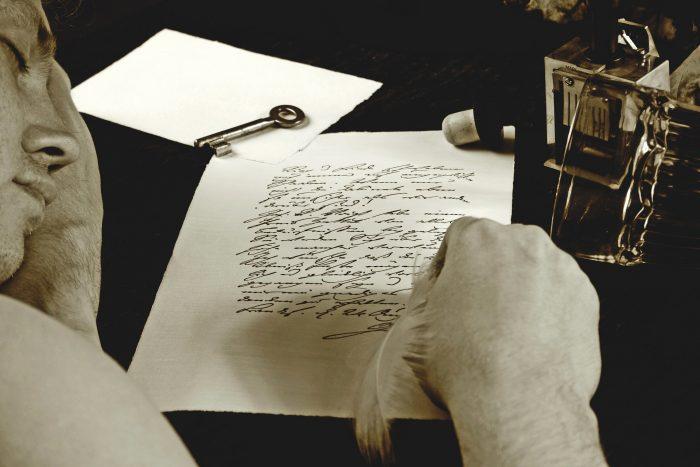Sonnets were originated in the 13th century in Italy. Sonnets usually centers it’s idea on romance and has two major forms. They were previously used by writers to express romantic emotions through the writing of poems.
The two major forms are;
- Shakespearean Sonnet (William Shakespeare -English Sonnet)
- Petrarchan Sonnet (Poet Petrarch)
Sonnets are written with rules. It is a poem with 14 lines. Both the Shakespearean and Petrarchan Sonnet comes with different rules.

Read Also: Morte d’Arthur Written By Alfred, Lord Tennyson
Table of Contents
Shakespearean Sonnet
- It has 14 lines
- 3 quatrains (4 lines each) and couplet (2 lines).
- The 14 lines are divided into four subsections
- The first 3 quatrains have 4 lines each with the second and 4 lines of each group containing rhyming words.
- The sonnet concludes with a two-line(couplet), and these lines rhyme with one another.
- There are typically ten syllables per line, which are phrased in iambic pentameter.
- It has the following rhyme scheme: ABAB, CDCD, EFEF, GG.
Example of Shakespearean Sonnet
Sonnet 116: Let Me Not To The Marriage Of True Minds
By William Shakespeare
Let me not to the marriage of true minds
Admit impediments. Love is not love
Which alters when it alteration finds,
Or bends with the remover to remove.
O no! it is an ever-fixed mark
That looks on tempests and is never shaken;
It is the star to every wand’ring bark,
Whose worth’s unknown, although his height be taken.
Love’s not Time’s fool, though rosy lips and cheeks
Within his bending sickle’s compass come;
Love alters not with his brief hours and weeks,
But bears it out even to the edge of doom.
If this be error and upon me prov’d,
I never writ, nor no man ever lov’d.
Read Also: Quatrain; 4 Line Poems
Petrarchan Sonnet
Petrarchan Sonnet is sometimes called the “Sicilian sestet,” named for the dialect used by the sole originator of this sonnet, Petrarch himself.
Rules of Petrarchan Sonnet
- It has two stanzas.
- It represents an argument, observation or a question in the first 8 lines of the sonnet.
- The 14 lines of the sonnet are divided into an octave (eight-line sub-strand) and it’s followed by a sestet(a six-line sub-strand).
- The octave in the sonnet has the rhyme scheme; ABBA, ABBA. This means that the 1st, 4th, 5th, and 8th lines must rhyme with each other. Then the 2nd, 3rd, 6th, and 7th lines also rhyme with each other.
- Also, the “Crybin” variant on the Petrarchan sonnet has a separate rhyme scheme for the opening of the octave: ABBA CDDC.
- The sestet also follows one of two rhyme schemes. The most known is a CDE CDE rhyme scheme (here, the 9th and 12th, 10th and 13th, and 11th and 14th lines rhyme with one another)
- The other sestet rhyme scheme is CDC CDC (here too, the 9th, 11th, 12th, and 14th lines also rhyme; and the 10th and 13th lines rhyme).
Example of Petrarchan Sonnet
Sonnets from the Portuguese 43: How do I love thee? Let me count the ways
By Elizabeth Barrett Browning
How do I love thee? Let me count the ways.
I love thee to the depth and breadth and height
My soul can reach, when feeling out of sight
For the ends of being and ideal grace.
I love thee to the level of every day’s
Most quiet need, by sun and candle-light.
I love thee freely, as men strive for right;
I love thee purely, as they turn from praise.
I love thee with the passion put to use
In my old griefs, and with my childhood’s faith.
I love thee with a love I seemed to lose
With my lost saints. I love thee with the breath,
Smiles, tears, of all my life; and, if God choose,
I shall but love thee better after death.
Read Also: What Is Poetry? Definitions According To Popular Poets In Different Situations
Other Variations
The Caudate Sonnet: Adds codas or tails to the 14-line poem. Gerard Manley Hopkins’s “That Nature Is a Heraclitean Fire” is an example of a Caudate Sonnet.
The Stretched Sonnet: Is extended to 16 or even more lines, examples are those in George Meredith’s sequence Modern Love.
A Submerged Sonnet: Is creased into an extended poetic work; Lines 235-48 of T.S. Eliot’s “The Waste Land” is an example of a submerged sonnet.
The Sonnet Redoublé: This is also called a Crown of Sonnets, comprises of 15 sonnets that are correlated by the repetition of the last line of one sonnet as the initial line of the subsequent, and the definitive line of that sonnet as the introductory line of the prior; the last sonnet has all the repeated lines of the last 14 sonnets, in the same order in which they occurred. A Wreath for Emmett Till written by Merilyn Nelson is an example of sonnet redoublé.
A Sonnet Sequence: This is a group of sonnets having the same subject matter and sometimeonally have a dramatic problem and persona. George Meredith’s Modern Love sequence, Sir Philip Sidney’s Astrophel and Stella, Rupert Brooke’s 1914 sequence, and Elizabeth Barrett Browning’s Sonnets from the Portuguese.
The Curtal Sonnet: A shortened interpretation arranged by Gerard Manley Hopkins. The curtal sonnet retains the proportion of the Italian form of sonnet, substituting 6 six-stress tercets for 2 quatrains in the octave with the thy ABC rhyme scheme, and four and a half lines for the sestet with DEBDE rhyme scheme, also six-stress except for the last three-stress line. “Pied Beauty” written by Gerald Manly is an example of a curtal sonnet.
The Spenserian Sonnet: Is a 14-line poem formulated by Edmund Spenser in his Amoretti, that differs the English form by connecting the three quatrains with a rhyme scheme of ABAB BCBC CDCD EE.










